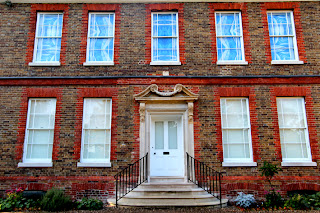the exhibition has been featured in the University of the Arts blog
a selection of images from my last visit
Some thoughts on unpicking
and rebinding -
How has working within the
archive informed my practice - What will last?
Over many years of
reflecting on my work previous to this project I had come to know that my
practice had the concept of control at its core. This issue of restriction was
challenged by the choice of materials that were used within the project. This selection
in turn was governed by the establishment of a set of rules developed from a
political position. The concept of the hidden within the fold has informed this
thinking. Practically the materials chosen serve an unsung yet useful original purpose;
stiffening, strengthening and creating form within the garment.
Politically
there is a link with workers making and possibly controlled by the processes
they are engaged with, making work for idle hands, subjugation through craft.
When the choice of
materials can be anything rules and concepts are important to enable you to
focus what you will work with. Materials have political and aesthetic factors connected
to them and this choice compounds with issues of quality and value towards the
final pieces.
The extensive use of
fabric within the project has forced me to release a degree of control in the
work I've been making – paper and card ‘move’ less. The inherent
quality of materials one works with is apparent and informed by every decision
and those decisions embedded within the materials. The fabric feels alien and
too open, although this has been one of the many practical lessons learnt.
I have developed my
personal connection to the history of textile activity within the Eastern
Region, specifically amassing knowledge around the meaning of smocks through time –
agricultural labourer to bohemian crafts person including a political
position around workers and decoration.
Learning from making is something that I constantly
talk about with the students I work with. Asking them to consider and act on it
- this new body of work, where I have positioned myself outside my
'traditional' knowledge has required me to learn skills and develop strategies which
have in turn moved my work forward
I have been developing my practical
textile skills, specifically smocking techniques. This has widened my making
vocabulary, enabling me to have a richer visual voice. This extensive period of
learning skills from practising creating pockets using paper and lining
materials to traditional smocking techniques is now part of my practice. This
rigorous making has enabled parallels and connections between pattern cutting
and the world of experimental book production to be considered.
Reflection whilst
physically being with the objects in the collection enables links to flow. The objects have a palimpsest quality; the record of their history
reappears on the surface like the traces of old texts to be 'read', a memory of
use embedded within the objects physicality, like cumulative palimpsests. And
the objects themselves leave their own mark on the viewer. Every object has an
infinite number of stories attached and each personal truth illustrates
multiple connections and this in itself documents our relationship to what and
how we value the objects around us. But when making work that is inspired by
the works of others the shadow of impersonation is ever present. When
referencing becomes pastiche pieces can cease to be viewed as valid or creative
in their own right. Looking at objects and striking a balance between research
and creativity, between citation and indication.
The physical making led, through reflection to a series
of questions, including when does bend become crease become fold? When
does an object become itself? This initial interest in the idea of objectness
led to a need to consider categorisation and it became a large part of the
research.






















